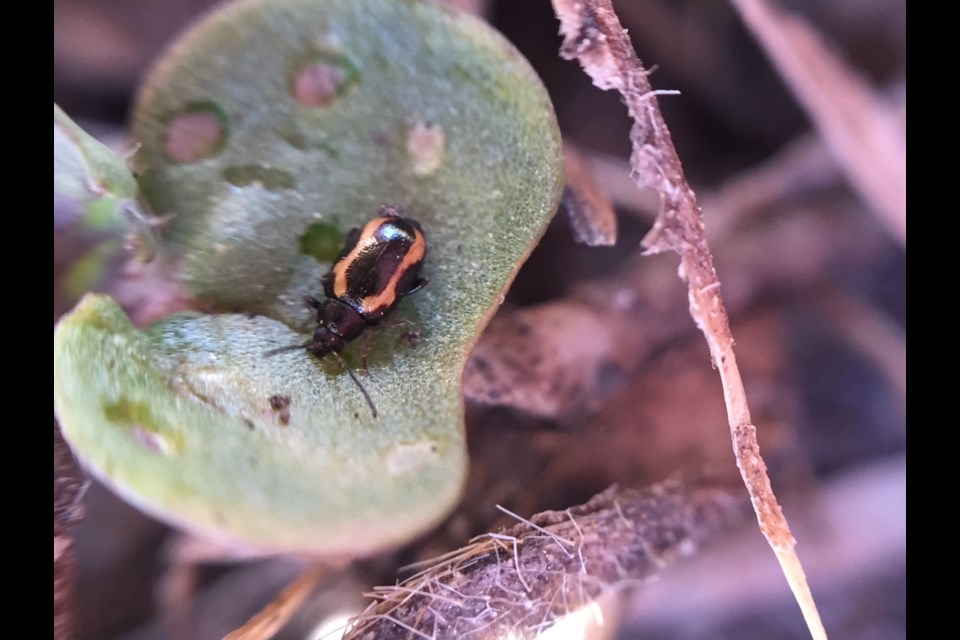Seed treatments are an effective integrated pest management strategy for flea beetles, the most costly insect pest of canola in Canada. However, with slow establishment of the crop combined with perfect warm, dry conditions for flea beetles, in-crop foliar applications may be required to protect the crop from profit loss. The key is to know the thresholds, scout closely and make the right economic decision for each field.
Here are eight steps that will help agronomists and canola farmers decide whether a foliar spray is needed.
Step 1. Know the spray threshold. The action threshold for flea beetles in canola crops is an average leaf area loss of 25 per cent or more. Yield loss can result when defoliation across the field exceeds 25 per cent, and this loss becomes economic (yield loss is more than the total cost of the foliar spray operation) at around 50 per cent leaf area loss. The reason for the ‘action threshold’ for flea beetles is that leaf area loss can escalate quickly in a severe infestation, so you want to take action before leaf area loss gets to 50 per cent.
Step 2. Assess leaf area loss. With thresholds in mind, check plants in a number of areas of the field to get an average damage level, scouting the newest leaves (as these tend to be preferred). Flea beetle populations and damage tend to be in concentrated areas. If cotyledons are chewed up but newest leaves show very little feeding, then plants may be outgrowing the threat or seed treatments may be having an effect (or both). If the growing point is lost, these leaves could be considered 100 per cent lost. Mark those plants and return in a day or two to see if true leaves are showing. Daily scouting needs to happen in areas approaching action threshold.
Step 3. Assess stem damage. Wind and cool conditions can drive flea beetles down to leaf undersides and stems. One shallow feeding mark (could be a few flea-beetle-sized bites) might not do any damage at all, but feeding that eats through the fragile new stem or causes it to break could be fatal. Plants that die due to stem feeding would have 100 per cent leaf area loss – but seedlings that die in this fashion are hard to find. They are often missed when it comes to damage assessment.
Step 4. Assess flea beetle feeding activity. Are the insects still present in the field and continuing to feed? If it looks like populations are dwindling, an application may not be necessary. If flea beetles are slow and lethargic, it may mean they have ingested seed treatment insecticide and are no longer feeding. Check again in a day or two before making a decision. Time of day and weather can influence flea beetle activity. On rainy days, for example, flea beetles will usually take cover, so rain will slow or even stop feeding for the time being. Rain can also help the crop more quickly recover.
Step 5. Consider the plant stand. With a thin stand of four plants per square foot, for example, growers can’t afford to lose any plants and may want to take action quickly as damage approaches 25 per cent. But with counts in the high end of the recommend range (of five to eight plants per square foot), growers can afford to lose a couple of plants without sacrificing harvest yield.
Step 6. Check the crop stage. After the four-leaf stage (four true leaves), the threat is likely over because the crop usually has enough plant material to feed flea beetles without compromising growth, and the plants can compensate for feeding better by this stage.
Step 7. Check canola fields frequently. Seed treatment insecticide starts working when the seed imbibes water and it can remain active for about three to four weeks after that point. High levels of flea beetles can overwhelm seed treatments. In a slow-developing crop, seed treatments can lose their protective capacities before the crop reaches the four-leaf stage. Scout often during these first three weeks, and if flea beetle levels are building and are close to thresholds, daily checking for a few days may be required.
Step 8. If spraying is required, only use pesticides registered for flea beetles in canola. Refer to product labels for proper use instructions.
For more tips on flea beetle life cycle and management, look for the flea beetle chapters in the “Insects” sections at canolaencyclopedia.caand canolawatch.org. While there, you can sign up to receive the Canola Watch agronomy updates.
–Keith Gabert is an agronomy specialist with the Canola Council of Canada. Email gabertk@canolacouncil.org. Thiscanola management tipis brought to you by canolawatch.org, a collaboration of the Canola Council of Canada, SaskCanola, Alberta Canola and Manitoba Canola Growers.



